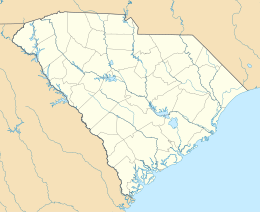Saint Helena Island, South Carolina
| Nickname: Frogmore | |
|---|---|

A Fourth of July celebration. St. Helena Island, South Carolina, 1939. Photo by Marion Post Wolcott.
|
|
| Geography | |
| Location | Beaufort County, South Carolina, United States |
| Coordinates | 32°22′35″N 80°34′20″W / 32.376272°N 80.572228°WCoordinates: 32°22′35″N 80°34′20″W / 32.376272°N 80.572228°W |
| Archipelago | Sea Islands |
| Area | 63.789 sq mi (165.21 km2) |
| Administration | |
|
United States
|
|
| State | South Carolina |
| County | Beaufort |
| City | Beaufort |
| Demographics | |
| Population | 8,407 (2000) |
| Pop. density | 50.87 /km2 (131.75 /sq mi) |
| Ethnic groups | Gullah |
St. Helena Island is a Sea Island in Beaufort County, South Carolina, United States. The island is connected to Beaufort by U.S. Highway 21. The island has a land area of about 64 square miles and a population of 8,763 as of the 2010 census. It is included as part of the Hilton Head Island-Beaufort Micropolitan Area. The island is renowned for its rural Lowcountry character and being a major center of African-American Gullah culture and language. It is considered to be the geographic influence behind the children's television program Gullah Gullah Island.
The first European to explore St. Helena was most likely Spanish explorer Lucas Vázquez de Ayllón around 1520, as part of the Spanish exploration and colonization of the sea islands. Deepwater Port Royal was established as the center of the area, and at one time was the capital of the entire Spanish colony of Florida. The area was later colonized by the French, the Spanish again, then finally fell into English hands, who occupied it until the American Revolution. In the War of 1812, Saint Helena saw some British naval presence.
The area was noted to be similar to the rice growing region of West Africa and soon captured slaves were brought to the Sea Islands, many from what is today Sierra Leone. Rice, indigo, cotton and spices were grown by these slaves, as well as Native Americans, and indentured servants from Europe. The mix of cultures, somewhat isolated from the mainland, produced the Gullah culture.
...
Wikipedia

